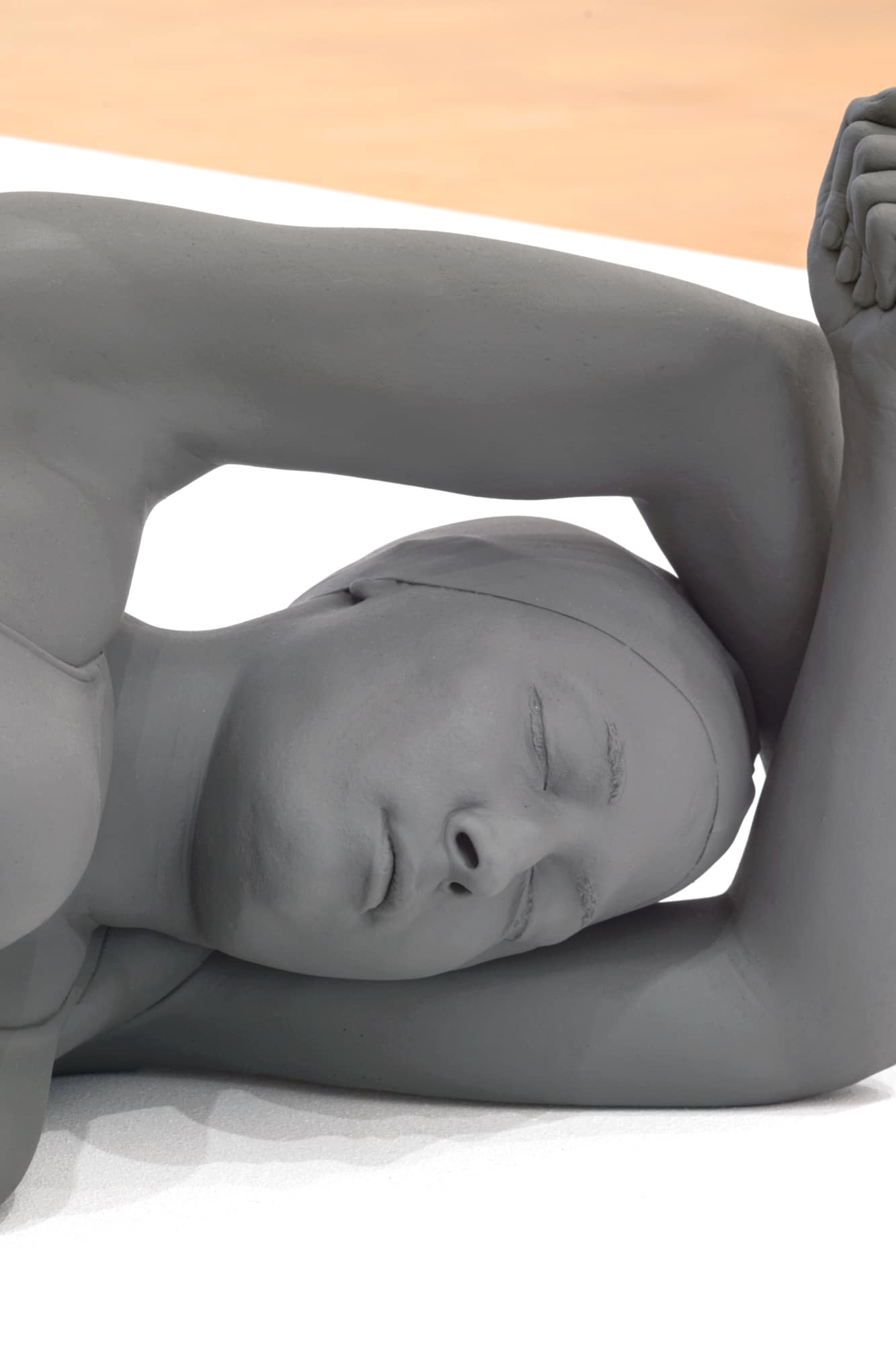Duo
![]()
Duo presents bodies, frozen in movement, and in silent contact with one another. Six duets (duos) that have been created one after the other, in the manner of a cadavre exquis are presented simultaneously. The piece is a physical presentation of the dancer in sculptural form, the seven bodies united by their monochromaticity.
Daniel Firman asked seven different dancers to perform six successive duets. Working with the first dancer’s pose, moulded and fixed as a sculpture, a second dancer performed a continuation of the movement, which was moulded in its turn. The third dancer, however, was not shown the first sculpture. None of the subsequent dancers, up to the seventh, were shown any sculpture previous to the one immediately before. As the duets progressed, each new dancer had to respond to an ever-increasing indeterminacy. For, although a determining agent was still present, this ‘germ’ had emerged from an infinite number of possible poses, producing a disequilibrium linked to the thickness of inaccessible memory. The end result is a formally, very incoherent development, the arrested image of an accumulation of actions in an unstable space. This chaotic accumulation rejects any idea of progress, referring each individuation to an inexhaustible source, a literally infinite substratum of indeterminacy. For this reason, the seven initial individuals (the dancers) were all treated identically: dressed only in underwear and swim hats. The Duo mannequins, all made in the same industrial silicone grey matter, preserve that first identity (they were moulded tightly round the body of each dancer) but blur it into a sort of ‘collective individuation’. At a formal level, this work can be compared with certain models of development found in nature; coral, for example, which unlike crystals is a living organism that develops in networks. It combines several information systems, and propagates in many ways and directions. In the same way as with coral, the individual is tied to the collective, or to the colony, but he tends also to « individualise », to become a « pure individual ».






